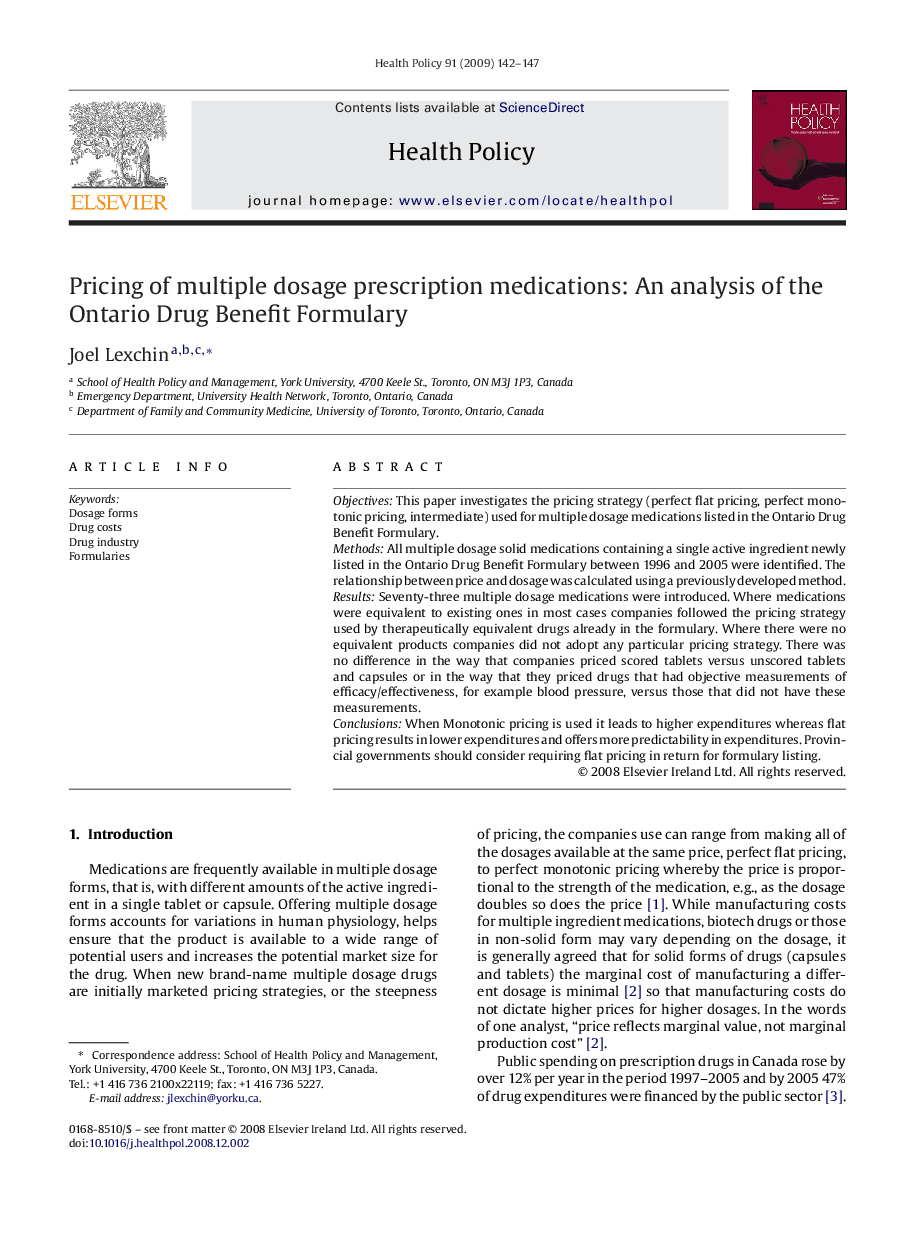| Article ID | Journal | Published Year | Pages | File Type |
|---|---|---|---|---|
| 4198385 | Health Policy | 2009 | 6 Pages |
ObjectivesThis paper investigates the pricing strategy (perfect flat pricing, perfect monotonic pricing, intermediate) used for multiple dosage medications listed in the Ontario Drug Benefit Formulary.MethodsAll multiple dosage solid medications containing a single active ingredient newly listed in the Ontario Drug Benefit Formulary between 1996 and 2005 were identified. The relationship between price and dosage was calculated using a previously developed method.ResultsSeventy-three multiple dosage medications were introduced. Where medications were equivalent to existing ones in most cases companies followed the pricing strategy used by therapeutically equivalent drugs already in the formulary. Where there were no equivalent products companies did not adopt any particular pricing strategy. There was no difference in the way that companies priced scored tablets versus unscored tablets and capsules or in the way that they priced drugs that had objective measurements of efficacy/effectiveness, for example blood pressure, versus those that did not have these measurements.ConclusionsWhen Monotonic pricing is used it leads to higher expenditures whereas flat pricing results in lower expenditures and offers more predictability in expenditures. Provincial governments should consider requiring flat pricing in return for formulary listing.
